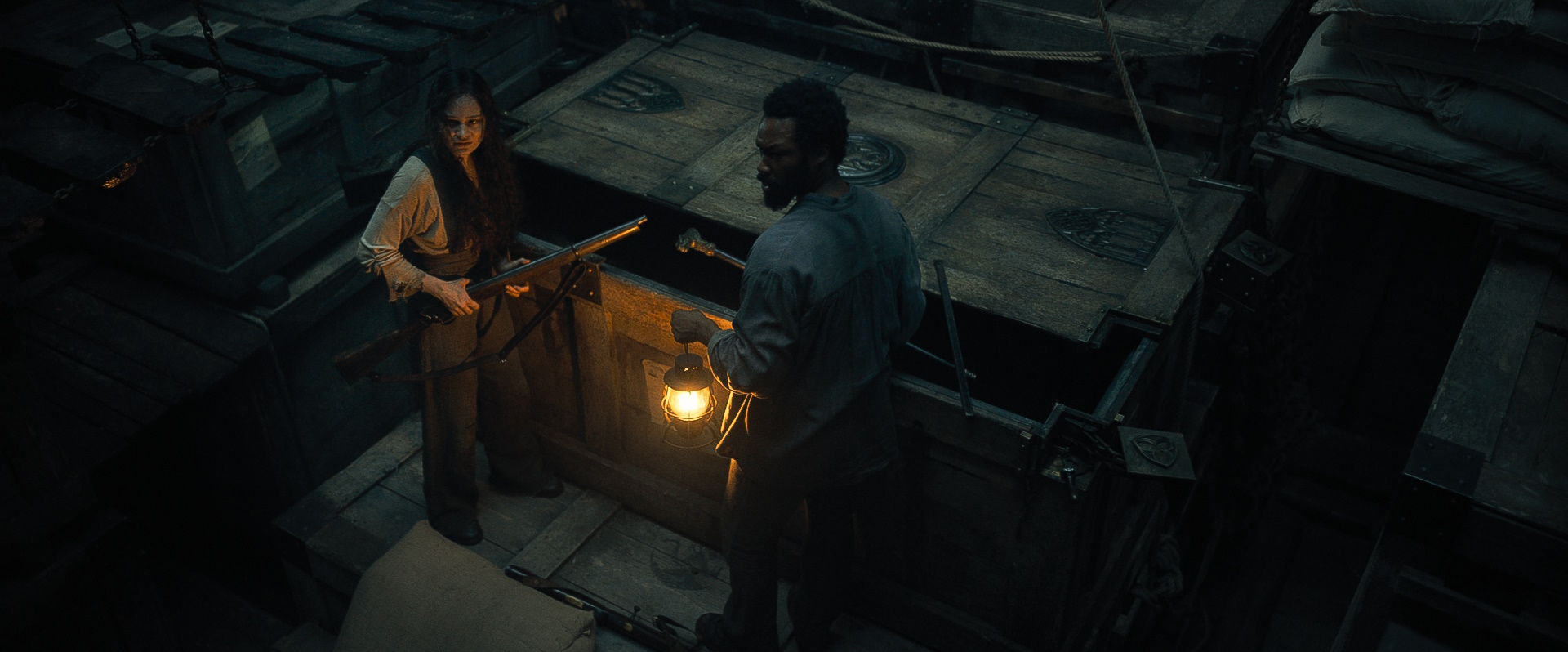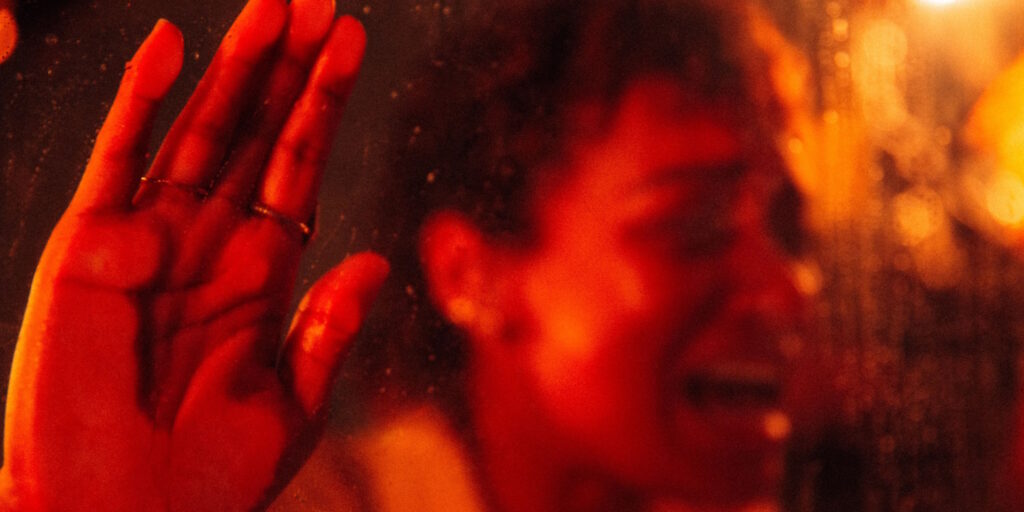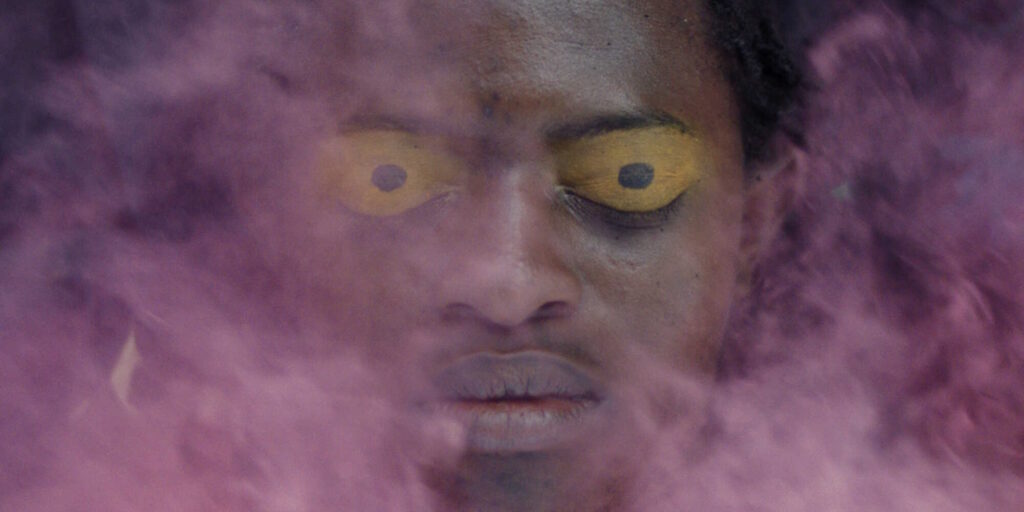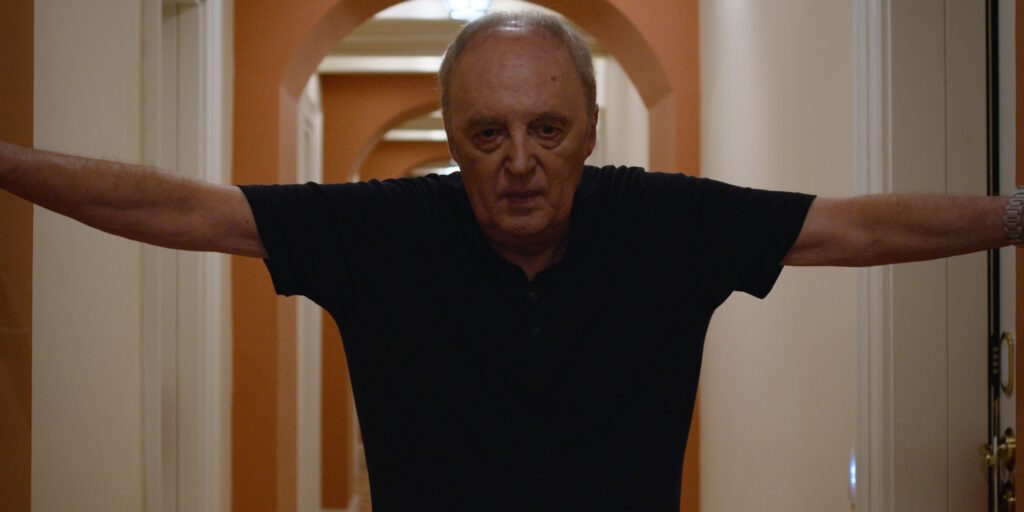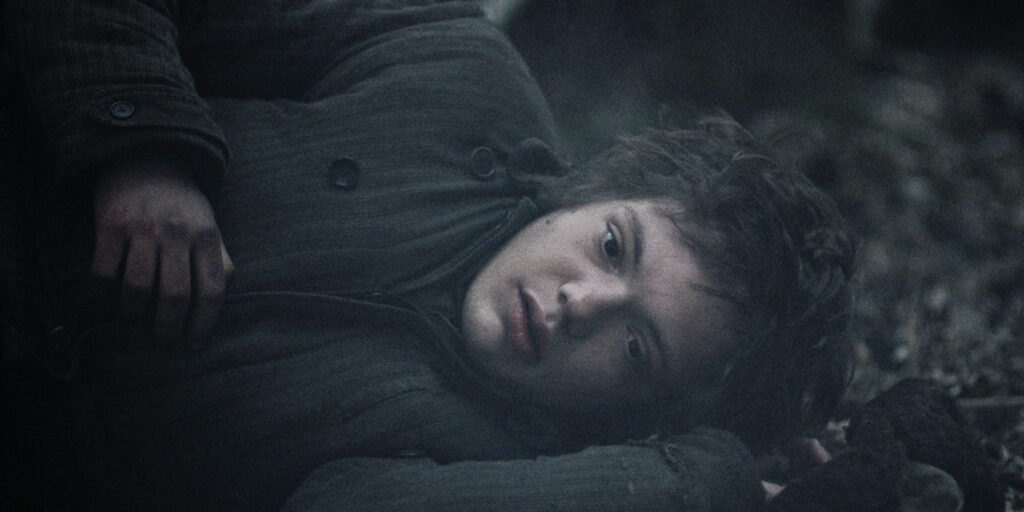Note: This review was written during the 2023 WGA and SAG-AFTRA strikes. Without the labor of the writers and actors currently on strike, the film being covered here wouldn’t exist.
The Victorian-set horror film has been somewhat out of fashion for a few decades, having achieved its last surge of true studio-backed popularity in the 1990s. That period arguably ended with the Hughes Brothers’ phantasmagorical but flawed Jack the Ripper adaptation, From Hell (2001), and the subgenre hasn’t really recovered since. Oh, there have been occasional notable efforts like Joe Johnston’s underrated remake of The Wolfman (2010) and Guillermo del Toro’s opulent gothic romance Crimson Peak (2015), but cinematic chills set in the gaslight glow of the 19th century remain few and far between.
The most immediately notable aspect of André Øvredal’s new feature, The Last Voyage of the Demeter, then, is that it is a full-throated Victorian horror picture in the Year of Our Lord 2023, one produced by DreamWorks and given a proper theatrical release by Universal, no less. For genre devotees who are jonesing for the distinctive pleasures of a lushly produced, 1800s-set supernatural thriller, Øvredal’s film will doubtlessly feel like a properly bloody steak dinner after a long, demoralizing fast. It’s not a completely satisfying meal, owing primarily to some clunky writing and editing. Various versions of the story allegedly spent years in Development Hell, and although Øvredal’s enthusiasm for the material is obvious, it’s also clear that the producers lacked a clear understanding of how to shape or market the film. (Witness the laughable, anachronistic use of a certain Smashing Pumpkins song in the feature’s trailer.)
One can at least understand why Hollywood has been so keen to make this film for so long, and why Øvredal and his collaborators embraced the project with marked gothic-horror fanboy glee. The premise is fairly irresistible, for, as cannier genre fans have already guessed, The Last Voyage of the Demeter is a Dracula story. Specifically, it’s a “sidequel”: Taking inspiration from a single chapter in Bram Stoker’s 1897 novel, it recounts the story of how the ageless, bloodthirsty Count Dracula journeyed from his Carpathian fastness to the streets of London via the sailing ship Demeter.
In Stoker’s book, the “Captains Log” chapter constitutes a compelling horror mini-narrative in its own right, the tale of a doomed vessel recounted from the perspective of her captain in a pseudo-epistolary style. Øvredal’s film zeroes in on the taut, creepshow potential of this story-within-a-story, observing that it effectively strips Dracula of 120 years of pop-cultural baggage and turns him loose on a group of ordinary working-class folk who have no notion that they are just the nameless, off-screen victims in a Dracula movie. Furthermore, when you trap a crew on a ship with a ravenous monster in the middle of nowhere, you basically have Alien (1979), and Alien is never a bad template for a horror movie.
Opening with on-screen text that awkwardly and superfluously explains that, hey, this is a Dracula movie, Øvredal’s feature begins at the end, with the Demeter having run aground on the coast of North Yorkshire. The local constables find no living crew members aboard, but they do uncover a captain’s logbook that records an unbelievable tale. Several weeks earlier, the Demeter sets out from a Bulgarian port on the Black Sea under the command of Captain Eliot (Liam Cunningham) and his first mate, Wojchek (David Dastmalchian). Also aboard are cabin boy Toby (Woody Norman) – who happens to be Eliot’s grandson – the ship’s cook Joseph (Jon Jon Briones), and a salty foursome of colorful but largely interchangeable sailors (Chris Walley, Stefan Kapicic, Martin Fururland, and Nikolai Nikolaeff). Rounding out the small crew is the latest addition and the de facto protagonist, Clemens (Corey Hawkins), a Cambridge-educated physician fallen on hard times, who is eager to return to London even if it means flexing sea legs that he hasn’t used since his maritime childhood.
The bulk of the Demeter’s cargo consists of 50 enormous wooden crates owned by an anonymous client, each container affixed with a curious dragon seal. It’s an admittedly mysterious charter but also a lucrative one, as it includes a hefty bonus for a speedy journey and early arrival in Britain. The prospect of a big payday initially has the crew in high spirits, but before you can say strigoi, sinister happenings begin to occur aboard the ship, including strange sounds emanating from the hold and slithering shadows glimpsed during the evening watches. The crew’s growing unease is amplified by the discovery of an unconscious Romani woman, Anna (Aisling Franciosi), who apparently stowed away in one of the crates. Clemens takes responsibility for her care, fixating on her peculiar bloodborne affliction, but to the ship’s veteran sailors, the presence of a woman onboard is just another ill omen in an expanding litany of unsettling misfortune. Events swiftly and remorselessly escalate from there to gruesome nocturnal attacks on the onboard livestock and, eventually, on the crew themselves.
A skeptic might assert that knowing exactly how this story ends – Dracula kills everyone and makes landfall in England, roll credits – puts an inherent drag on the situational tension in The Last Voyage of the Demeter. However, Øvredal approaches the material with passion and conviction, treating it less as an accessory story than as a stand-alone, period creature feature. With the exception of a creepy but wholly unnecessary epilogue, the film doesn’t belabor its connection to the source novel or to the story and visuals that have been more popularly received through a century’s worth of theatrical and cinematic adaptations. Øvredal keeps the essence of the film commendably simple: a group of people are physically trapped in a confined environment with a powerful predator that is picking them off one by one. They don’t know they’re the collateral damage in the most famous English-language horror story of all time, so they don’t behave with any kind of meta-awareness of their situation.
Clemens fills the role of the token rationalist, Captain Eliot the seasoned but out-of-his-depth leader, and Anna a tripartite hybrid of exposition-spouting wise woman, trembling damsel-in-distress, and world-weary badass action-lady. The rest of the crew are an anxious, superstitious lot, accustomed to freak weather and strange phenomena, but wholly unprepared for an ancient, ageless evil on the scale of their unwelcome passenger. The Demeter itself makes for a fantastic setting, realized as a series of incredibly tactile sets crafted with splendid attention to period detail. When Clemens initially comes aboard, Toby gives him – and therefore the audience – a quick tour of the ship, elegantly providing a clear sense of the restricted geography that will define the next 90 minutes of bloody terror.
Quite bloody, as it happens. Øvredal embraces the film’s hard R rating with the gusto of a genre aficionado who recognizes that studios don’t exactly give $30 million theatrical horror films free reign these days. Consider this your content warning: The Last Voyage of the Demeter is very gory and at times shocking, stomping on a couple of mainstream horror-movie taboos with the beastly cruelty of a wolf ripping out a deer’s throat. The design of Dracula himself (Javier Botet) is far afield from the caped Transylvanian nobleman of popular conception, starting out as a kind of mewling Eraserhead mutant and evolving into a hairless, needle-fanged chiropteran nightmare that loosely nods towards Nosferatu’s Count Orlock. The film eschews complex mythology or vampiric rules, keeping the monster lore straightforward: Dracula feeds on living blood, sleeps in the earth of his homeland, and fears the touch of the sun. That’s it.
Cinematographers Roman Osin and Tom Stern – the latter a longtime Clint Eastwood collaborator – contribute significantly to the film’s rich atmosphere, whether the scene in question takes place on the sun-parched upper deck, in gloomy lantern-lit interiors, or in clinging nocturnal sea fog. Credit also goes to the unnerving sound design overseen by Adam Kopland and the score by genre powerhouse Bear McCreary, which shifts smoothly from haunted-house eeriness to thunderous monster action.
Overall, it’s a gratifying nuts-and-bolts period horror movie. However, the film’s generous and exuberant execution unfortunately doesn’t save The Last Voyage of the Demeter from the shoals of some gawky writing and editing. Hawkins is normally a solid performer, but he seems a bit adrift in a role that lacks clear characterization. The film’s attempts to give Clemens a poetic worldview and an empathetic backstory – such as a scene that belatedly and rather bafflingly connects his experiences with racial prejudice to the crew’s current predicament – just come off as clumsy and scattershot, orphans from dozens of successive rewrites. Patrick Larsgaard’s editing has an aggravating habit of scuttling the clear, coherent sense of space that the film is plainly aiming to maintain. The latter half of the feature in particular is positively filthy with abrupt, confusing cuts that betray missing scenes and reek of the sort of ham-fisted studio tinkering that inevitably follows disappointing test screenings. These faults aren’t enough to fatally sink The Last Voyage of the Demeter, but they are enough to demote it from a future minor horror classic to a lavish but imperfect genre exercise.
The Last Voyage of the Demeter opens in theaters everywhere on Friday, Aug. 11.
